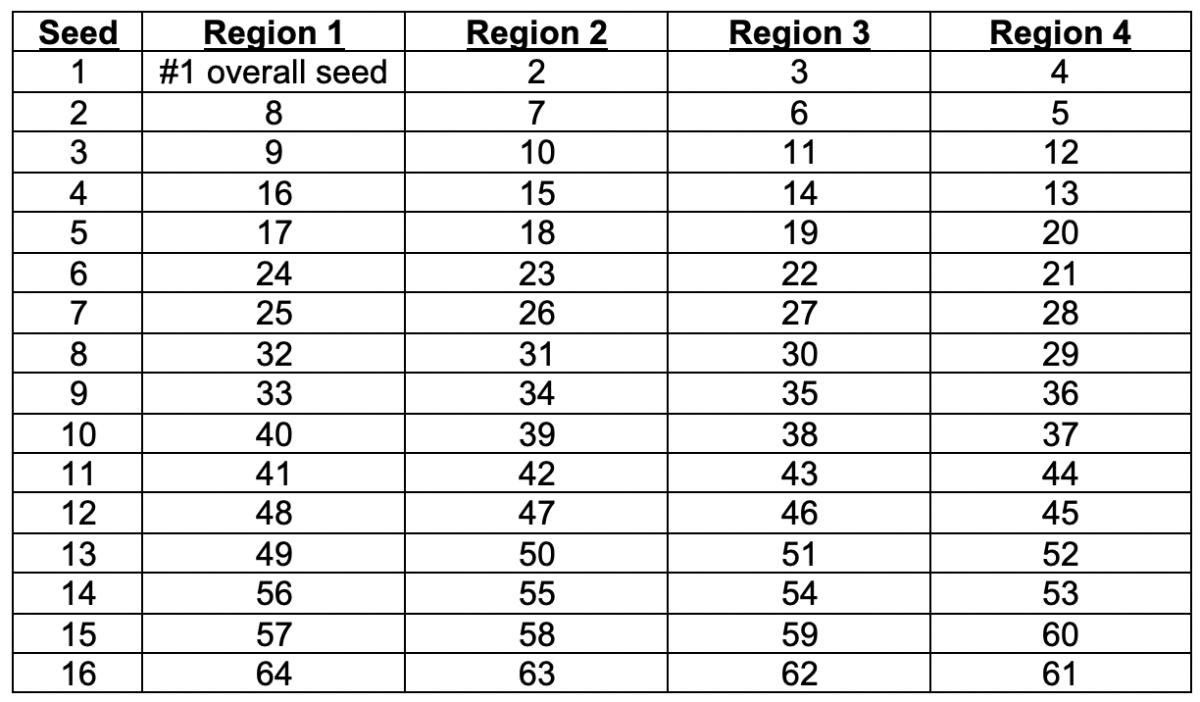NCAA Tournament Selection Committee Will Use S-Curve for Bracketing Teams in 2021
Has your college basketball team ever found itself the victim of being the number one overall seed in the NCAA Tournament only to look down the bracket and find the strongest number two seed in the same region?
Well worry no more college basketball fan (at least for 2021), the NCAA Division I Men’s Basketball Committee announced on Friday that it was introducing new bracketing principles for this season, including placing teams in the bracket based on the “s-curve” rather than using geographical considerations as the priority.
What does this mean? Let’s unpack it.
In a typical year, where there are four NCAA Tournament regional sites spread around the country, the selection committee will often give consideration to geographic proximity when placing a team in a certain region, even if it means, for example, placing the strongest number two seed in the same bracket as the number one overall seed.
In other words, rather than rewarding the best team in the country by giving them the lowest of the number two seeds, it’s possible that they could face the best number two seed in the Elite Eight.
This year, with the entire tournament based in and around the Indianapolis area, and geographical proximity therefore not a concern, the committee has decided to fully embrace the s-curve model of placing teams in the bracket (which, in my humble opinion, should be the case every year).
For those unfamiliar with the s-curve, let me explain. Every year, the selection committee ranks the 68 NCAA Tournament teams in an overall seed list. This means that while there are four number one seeds, they are ranked 1-4, creating some separation between those four teams. While there are four number two seeds, they are ranked 5-8, and so on.
Once again, when the committee focuses on geographical considerations for bracketing teams, the number one overall seed might end up with the team ranked number five overall in their bracket, even though it seems fair that top team should be rewarded by having the lowest number two seed in their region (number eight overall).
When following the s-curve, that’s exactly what happens. Number one overall is paired with number eight overall, number two with number seven, number three with number six, and number four with number five. This logic follows all the way down through the bracket.
As things stand now (according to KenPom.com), that’s the difference in number one overall Gonzaga having to play Villanova (number five) rather than Tennessee (number eight) in the Elite Eight. Not exactly the competitive advantage that should be afforded to the best team in the land, is it?
I should acknowledge that it’s rare for the seeds to hold all the way through, but it only makes sense to put teams in the spots they’ve earned via their play throughout the season rather than getting a bump (or drop) due to their location.
Dan Gavitt, the Senior Vice President of Basketball for the NCAA, said in a statement,
“As the committee discussed this topic, it became clear that the S-curve bracketing option makes the most sense, given the unique circumstances with which this tournament will be played. In a normal year, bracketing is done with consideration given to keeping as many teams as close to their campus as possible, reducing team travel and providing as many fans as possible an opportunity to watch their favorite teams participate in The Big Dance. But this year only, with the entire tournament being played in Indiana, the committee believes this different approach is optimal.”
The regions would ultimately shape up like this:
(NOTE: The following table won’t account for play-in games, just the to 64 teams. Additionally, I’ve numbered the regions 1-4 for the purpose of this exercise; the actual names of the regions are yet to be released by the NCAA.)

Additionally, while the s-curve will be the predominant guideline followed by the selection committee, they will still abide by several standard procedural exceptions. Per the NCAA, those include:
- Each of the top four teams selected from a conference shall be placed in different regions if they are seeded on the first four lines.
- Teams from the same conference shall not meet before the regional final if they played each other three or more times during the regular season, to include the conference tournament.
- Teams from the same conference shall not meet before the regional semifinals if they played each other twice during the regular season, to include the conference tournament.
- Teams from the same conference may play each other as early as the second round if they played no more than once during the regular season, to include the conference tournament.
- If possible, rematches of nonconference regular-season games should be avoided in the First Four and first round.
You can follow us for future coverage of all things NCAA Tournament by clicking “Follow” on the top right hand corner of the page.
Send Isaac Schade an email to talk more about this article.
Follow us on Twitter: @SI_Heels | @isaacschade
Please post any comments below!
More from AllTarHeels
